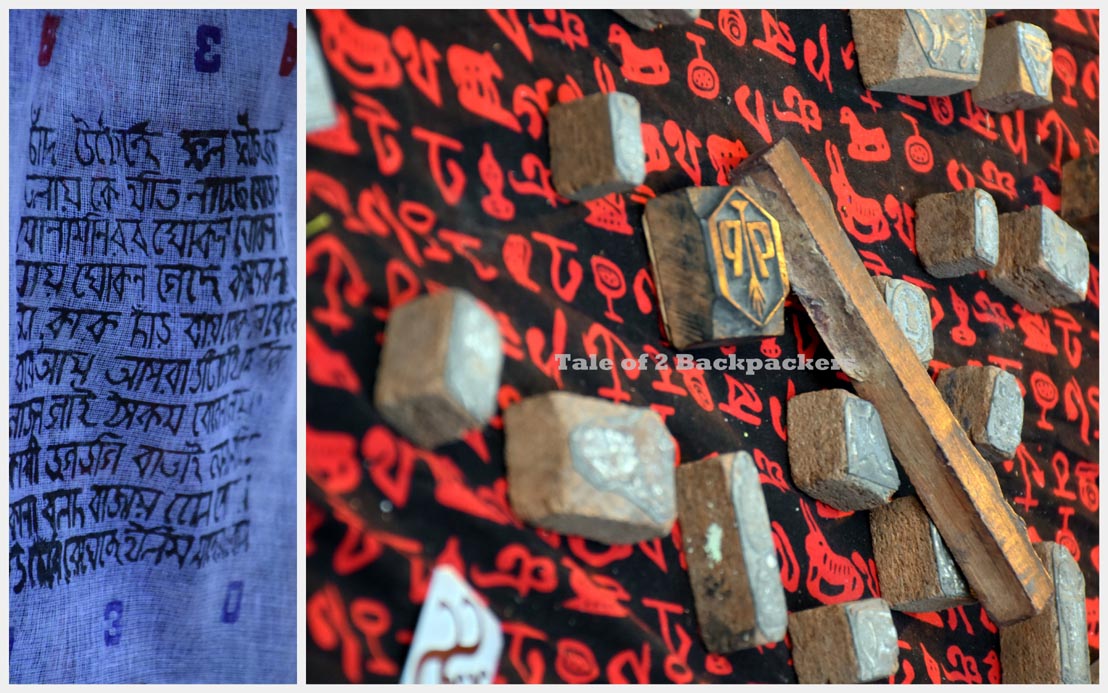A century old printing technology is on the verge of dying, but still struggling to carry on the legacy. The letterpress printing in a nondescript shed in Potuatala Lane in College Street is one such printing press still printing reams of paper using the age old technology. Not everyday we come close to our past, or get to see the heritage of our city. The Chhapakhana trails organised by the “Future of the Past” aimed to make us aware of our past, our heritage. The Future of the Past is a project that aims to bring the present and future closer to the past and this year they focused on communities. The Chhapakhana Trail is the result of this project where we came to know about the community that ran the printing press in the city. Though dwindling in numbers, they are still present in various nooks and corners of the city.

Chhapakhana Trail
Chhapakhana Trail
The Chhapakhana trail started from the famous Coffee House of College Street, a very apt beginning.
We started from “Boichitra” – literally meaning books and picture. The place was the studio of famed Charu Chandra Guha, the master photographer of portraits and group photos. Boichitra is on the second floor of the Coffee House.

Boichitra – at the Coffe House Building
The building that houses the famous Coffee House – the meeting place of talents and intellects is also known as the Renaissance Building. The building was the birthplace of several printing presses of the erstwhile Calcutta. The Renaissance Press was founded by Narendranath Bhattacharya who used the pseudonym of Manabendra Nath Ray. He was a revolutionary and radical activist of those times.

The famous Coffee House
From the Coffee House, our walk started through Bankim Chatterjee Street. Another important place was Cygnet Press. The building looks very ordinary today, but it was once the literary hub of the city. It was founded by Sri. Dilip Kumar Guha who was the first one in Kolkata to give importance to book covering and designing. Satyajit Ray had worked here as a visual designer in this publishing house at the beginning of his career and many of the books don the covers designed by him. The press has published many renowned books like Jawaharlal Nehru’s Discovery of India, Bibhutibhushan Bandopadhyay’s Pather Panchali and Chander Pahar, Jibanananda Das’s Rupasi Bangla and Banalata Sen. Unfortunately the press did not meet the commercial success so desired. It was soon closed and was later taken over by Ananda Publisher.
The trail brought us before the house of Sri. Aurobindo, or as the KMC plaque states. It was actually the house of Krishna Kumar Mitra, uncle of Sri Aurobindo who was also a Brahmo reformer. He founded the Sanjibani Press that went on to become the mouthpiece of the Indian nationalists. Sri Aurobindo had taken shelter in this house during his active politics days.

The “House of Sri Aurobindo”
The Baptist Mission students hall
This was actually a boarding house for the students founded by the Baptist Mission press in 1916. The Baptist Mission press has to its credits a lion share of books that were published in the 19th Century Bengal including those from the Asiatic Society or other major institutions.

Baptist Mission Hostel
We visited the Letter Press printing house on the Potuatala Lane. It was a very dilapidated building with four workers running the press. The machine was itself quite old and they do not get much order nowadays.

Letter Press
After the Letterpress printing, we saw the gold foil printing technology. Earlier gold printing was done, but now only gold foil is used for obvious reasons.
The third press that we saw used etching technology. This process uses different chemicals and acids for etching a particular design on a lead sheet. As the design is etched, they are then used to print on different surfaces.

Etching

The Dark Room for etching
The trail also took us to the house of the famous Bengali writer Sri Trailokyanath Mukhopadhyay. He is known for introducing fantasy in Bengali literature. His characters of Kankabati and Damrudhar are famous among the Bengali literature circle.

Examples of printing displayed at Vidyasagar Smriti Bhavan
We stopped at the residence of Hemendra Mohan Bose, a famous entrepreneur. He had excelled in the perfumery business. He was also the founder of Kuntalin Press. It is said that he was the first one to introduce Literary award in India – the Kuntalin Award. It only came with one condition – the writer has to mention one of his products in his novel! Jagadish Chandra Bose and Sarat Chandra Chatterjee were the recipients of the Kuntalin award.

House of Hemendra Mohan Bose
The Chhapakhana Trail concluded at the Vidyasagar Smriti Bhavan. A cultural programme was arranged here for the evening.

Vidyasagar Smriti Bhavan – the end point of the trail

The Vidyasagar Smriti Bhavan
The Chhapakhana Trail is an interesting initiative to take an interest in our past and the lost heritage of the city. We have always maintained that Kolkata is a place that is full of wonder. Trails like this will definitely make us more curious towards our heritage and culture. We would like to convey special thanks to Kolkata Bloggers for inviting us for this event.
Words when printed , have a life of their own. – Carol Burnett









0 Comments